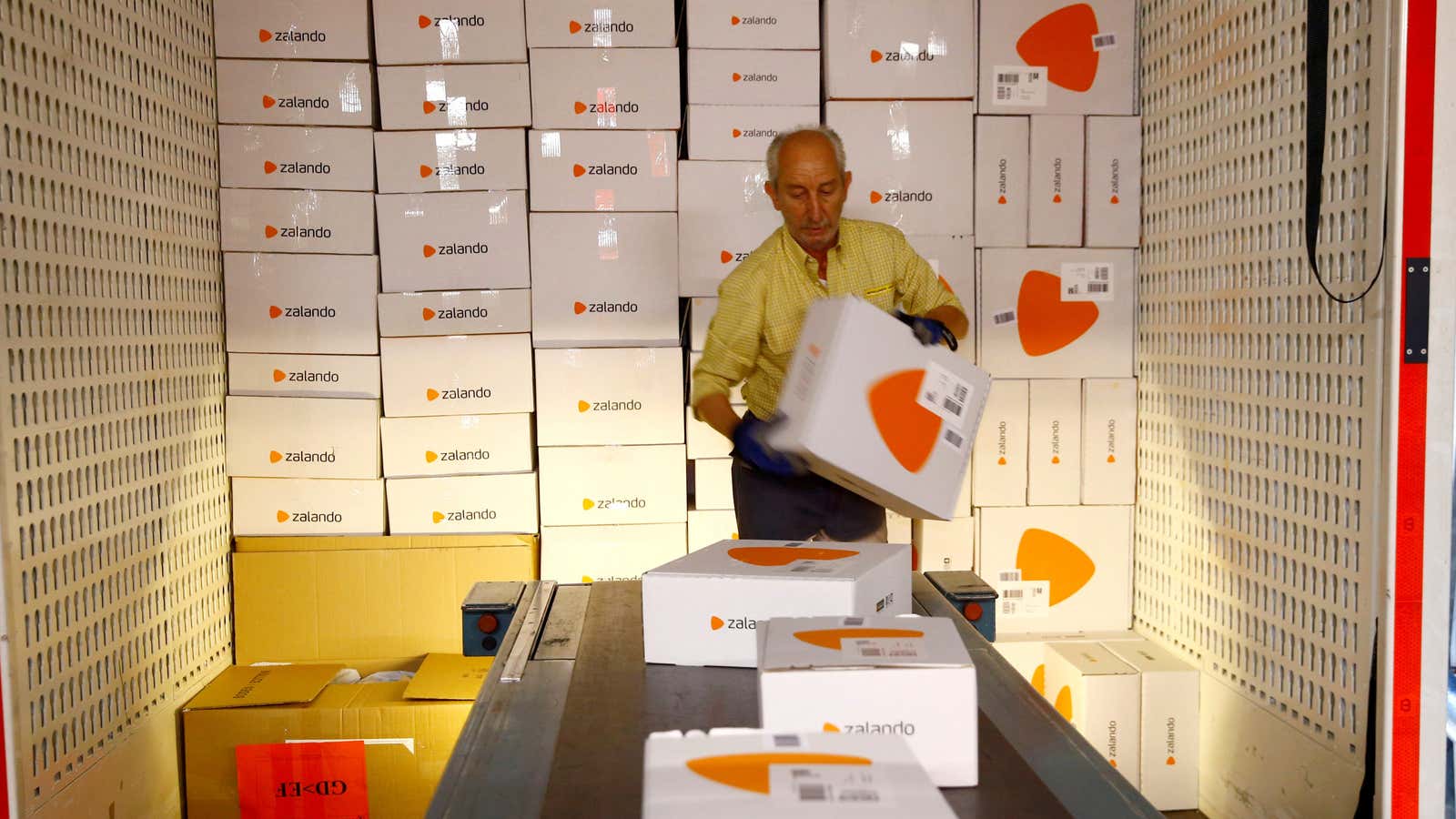Returns are a plague for retailers, especially those selling fashion online. Shoppers order items to try them on and often buy several at a time expecting to return what they don’t want. For every item sent back, companies run up costs for shipping and processing. Until the products reenter the system, they can’t go back up for sale. Those that arrive damaged or dirty may never return to inventory. The expenses add up and can eat away as much as a third of a company’s revenue, by one estimate.
But this week, big online fashion retailers reported the usual tide of customer returns has diminished amid the Covid-19 pandemic. It’s helping to plump their profit margins, and they say it comes down to changes in how consumers are shopping and what they’re buying.
UK retailer ASOS said yesterday (pdf) that it has seen a “significant and sustained reduction” in returns since April. The same day, Revolve, based in the US, called out a “meaningful decrease in the percentage of merchandise returned year-over-year” on a call with investors and analysts about its latest quarter. And Zalando, which is based in Germany and bills itself as Europe’s largest online fashion retailer, pointed to lower returns as a boost to its recent profitability on an Aug. 11 earnings call.
In their explanations for the lower returns, some common themes arose. First, they say consumers are considering purchases more carefully. Jesse Timmermans, CFO of Revolve, said on the company’s call that customers are “being more discerning” in their decisions about what to purchase, while ASOS noted a “prolonged shift in customer behavior towards more deliberate purchasing across all product categories.”
The products shoppers want have changed too. With many still sheltering at home, they’re buying more activewear and beauty products, and fewer dresses. Both Zalando and Revolve pointed out return rates for dresses tend to be high, while the rates for beauty and sports products are much lower. Shoppers, of course, don’t need to try on beauty products for fit, while many are buying activewear for its function and comfort as much as appearance.
Other factors have helped too. Zalando said it has seen an influx of new customers, and they tend to have lower return rates as they test out how convenient it is to make purchases and send items back. Over time their return rates grow to match long-term customers. Revolve, meanwhile, said it sold a number of items on final sale, meaning they’re not eligible for returns.
The big question is how long this level of returns will persist. Zalando called the lower rates “temporary” and noted that they’re normalizing as time goes on. ASOS said the new behavior has already lasted longer than it anticipated, though there could still be pent-up returns coming and the future remains uncertain. Revolve said returns are still well below pre-pandemic levels but have risen from their low point as sales of full-price items and dresses grow again.
“As far as to what extent any of that behavior continues for the long term, I think it’s too early to say,” Revolve co-CEO Michael Karanikolas said on the call.
Still, for online retailers even a temporary ebb in the flood of returns is welcome.
